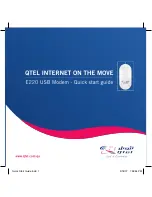
724-746-5500
blackbox.com
BLACK BOX
®
3 of 4
12/13/2010
#15626
Spread-Spectrum Technology Explained
Unlike conventional radio, Spread Spectrum doesn’t stick
to one frequency.
During transmission, Spread-Spectrum signals are spread over
a wide range of frequencies. Then a receiver collects (de-spreads)
the transmissions into their original form.
The Spread-Spectrum signal is then tagged with a pseudo-
random code. Only the user’s receiver recognizes this code. The
receiver knows in advance how the transmitter will spread the
spectrum, so it can easily find the signal and track the
transmission.
To do this, the receiver uses a locally generated replica pseudo-
random noise code, a received code, and a receiver correlator
to separate only the desired coded information from all possible
transmitters. (Think of the correlator as a filter that responds to
signals encoded with a pseudorandom noise code that matches
its own code.)
No Interference
The correlator is not susceptible to man-made interference
or other noises—whether natural or generated by other Spread-
Spectrum radios. The code simply sounds like background noise,
so it’s difficult for an unauthorized user to detect.
No Jamming
To prevent jamming, the de-spreading process spreads
(decreases) the power level of other signals.
How the Technology Caught On
Low susceptibility to interference and anti-jamming features—
plus the ability to tolerate high levels of electromagnetic and
multipath interference—are what prompted the United States
military to use the technology during World War II.
Spread Spectrum and the FCC
In 1985, the FCC let radios based on a Spread-Spectrum
modulation method operate without a license in certain portions
of the radio spectrum. The three frequencies the FCC specified
for commercial Spread Spectrum are:
• 902 MHz to 928 MHz
• 2400 MHz to 2483.5 MHz
• 5725 MHz to 5850 MHz.
Why the Technology is Popular Today
Spread-Spectrum technology is the ideal medium for wireless
data transmission for a number of reasons:
• Transmissions remain free from interference and jamming.
• Transmissions can be specifically addressed.
• Multiple conversations can occur simultaneously in relatively
small areas.
• Data rates can be very high if you use the 2400 band
or higher.
technically speaking






















